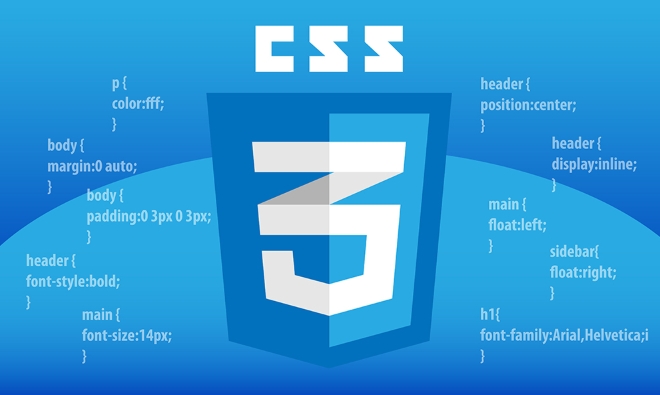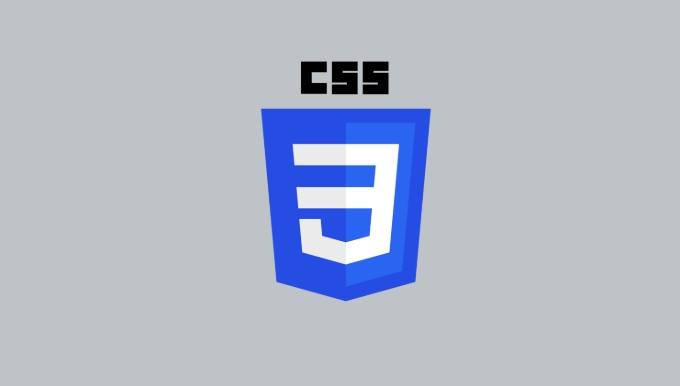What are CSS preprocessors and why use them?
Jul 21, 2025 am 02:38 AMCSS preprocessor is a tool that enhances CSS development. 1. It reduces duplicate code and manages styles uniformly through variable definitions (such as $primary-color); 2. It supports nested structures (such as ul and li directly in .navbar) to make the code logic clearer; 3. It provides mixin function to achieve style reuse (such as btn-style); 4. It can automatically add browser prefixes in combination with PostCSS to improve compatibility. Suitable for long-term maintenance projects, team collaboration and component development scenarios, but small projects or novices can directly use native CSS.

CSS preprocessors are tools that extend CSS functionality, which allow you to write style sheets in a more advanced and logical way. Common preprocessors are Sass, Less and Stylus. Their core role is to make CSS more powerful and easier to maintain.

If you have ever written a lot of duplicate code, a color variable flying around, or a mess of nested structures, you should consider using a CSS preprocessor.
What is a CSS preprocessor?
Simply put, a CSS preprocessor is an "enhanced" CSS writing method that goes through a "translation" or "compile" once before it is finally output into a standard CSS file. You can organize your style code using functions such as variables, nested rules, functions, mixins, etc.

For example, you can define a color variable in Sass like this:
$primary-color: #3498db;
a {
color: $primary-color;
}This code will become standard CSS after compilation:

a {
color: #3498db;
}Why should you use a preprocessor?
1. Better code organization and reuse
The preprocessor supports variables, mixing, functions and other features, allowing you to write more modular and reusable code. For example, you can abstract the button style into a mixin and call it in multiple places.
For example:
@mixin btn-style {
padding: 10px 20px;
border-radius: 5px;
font-weight: bold;
}
.btn-primary {
@include btn-style;
background-color: #3498db;
}This not only reduces duplicate code, but also facilitates unified modification in later stages.
2. Nested structure makes the code more logical
Although CSS supports descendant selectors, it is easy to mess up writing. The preprocessor allows you to nest selectors to make the structure clearer:
.navbar {
background: #f8f8f8;
ul {
list-style: none;
li {
display: inline-block;
}
}
} This is more intuitive and easier to maintain than writing .navbar ul li in a straightforward way.
3. Global style of variable management
You can uniformly control common values such as color, font, spacing, etc. through variables. For example:
$font-size-base: 16px;
$color-main: #2c3e50;
body {
font-size: $font-size-base;
color: $color-main;
}If you want to change the theme color in the future, you just need to change a variable.
4. Automatically add browser prefix (with plug-in)
Although this is not the responsibility of the preprocessor itself, many construction processes will combine tools such as PostCSS to automatically add prefixes such as -webkit- and -moz- to certain attributes to save manual workload.
Who is suitable for preprocessors?
- Front-end developers : Especially those who need long-term maintenance projects can significantly improve efficiency.
- Team collaboration environment : Unified and standardized modular structure, which helps multi-person collaboration.
- Component development scenarios : In framework projects like Vue and React, it is common to match SCSS or Less.
Of course, if you are just writing static pages, small projects, or are not familiar with the construction process, it is completely fine to write native CSS directly.
Basically that's it. A CSS preprocessor is not a must, but it does help you write cleaner, more maintainable style code. If you have already encountered problems with styles that are difficult to manage, try Sass or Less, which may open the door to a new world.
The above is the detailed content of What are CSS preprocessors and why use them?. For more information, please follow other related articles on the PHP Chinese website!

Hot AI Tools

Undress AI Tool
Undress images for free

Undresser.AI Undress
AI-powered app for creating realistic nude photos

AI Clothes Remover
Online AI tool for removing clothes from photos.

Clothoff.io
AI clothes remover

Video Face Swap
Swap faces in any video effortlessly with our completely free AI face swap tool!

Hot Article

Hot Tools

Notepad++7.3.1
Easy-to-use and free code editor

SublimeText3 Chinese version
Chinese version, very easy to use

Zend Studio 13.0.1
Powerful PHP integrated development environment

Dreamweaver CS6
Visual web development tools

SublimeText3 Mac version
God-level code editing software (SublimeText3)
 CSS tutorial for creating loading spinners and animations
Jul 07, 2025 am 12:07 AM
CSS tutorial for creating loading spinners and animations
Jul 07, 2025 am 12:07 AM
There are three ways to create a CSS loading rotator: 1. Use the basic rotator of borders to achieve simple animation through HTML and CSS; 2. Use a custom rotator of multiple points to achieve the jump effect through different delay times; 3. Add a rotator in the button and switch classes through JavaScript to display the loading status. Each approach emphasizes the importance of design details such as color, size, accessibility and performance optimization to enhance the user experience.
 Addressing CSS Browser Compatibility issues and prefixes
Jul 07, 2025 am 01:44 AM
Addressing CSS Browser Compatibility issues and prefixes
Jul 07, 2025 am 01:44 AM
To deal with CSS browser compatibility and prefix issues, you need to understand the differences in browser support and use vendor prefixes reasonably. 1. Understand common problems such as Flexbox and Grid support, position:sticky invalid, and animation performance is different; 2. Check CanIuse confirmation feature support status; 3. Correctly use -webkit-, -moz-, -ms-, -o- and other manufacturer prefixes; 4. It is recommended to use Autoprefixer to automatically add prefixes; 5. Install PostCSS and configure browserslist to specify the target browser; 6. Automatically handle compatibility during construction; 7. Modernizr detection features can be used for old projects; 8. No need to pursue consistency of all browsers,
 What is the difference between display: inline, display: block, and display: inline-block?
Jul 11, 2025 am 03:25 AM
What is the difference between display: inline, display: block, and display: inline-block?
Jul 11, 2025 am 03:25 AM
Themaindifferencesbetweendisplay:inline,block,andinline-blockinHTML/CSSarelayoutbehavior,spaceusage,andstylingcontrol.1.Inlineelementsflowwithtext,don’tstartonnewlines,ignorewidth/height,andonlyapplyhorizontalpadding/margins—idealforinlinetextstyling
 Creating custom shapes with css clip-path
Jul 09, 2025 am 01:29 AM
Creating custom shapes with css clip-path
Jul 09, 2025 am 01:29 AM
Use the clip-path attribute of CSS to crop elements into custom shapes, such as triangles, circular notches, polygons, etc., without relying on pictures or SVGs. Its advantages include: 1. Supports a variety of basic shapes such as circle, ellipse, polygon, etc.; 2. Responsive adjustment and adaptable to mobile terminals; 3. Easy to animation, and can be combined with hover or JavaScript to achieve dynamic effects; 4. It does not affect the layout flow, and only crops the display area. Common usages are such as circular clip-path:circle (50pxatcenter) and triangle clip-path:polygon (50%0%, 100 0%, 0 0%). Notice
 Styling visited links differently with CSS
Jul 11, 2025 am 03:26 AM
Styling visited links differently with CSS
Jul 11, 2025 am 03:26 AM
Setting the style of links you have visited can improve the user experience, especially in content-intensive websites to help users navigate better. 1. Use CSS's: visited pseudo-class to define the style of the visited link, such as color changes; 2. Note that the browser only allows modification of some attributes due to privacy restrictions; 3. The color selection should be coordinated with the overall style to avoid abruptness; 4. The mobile terminal may not display this effect, and it is recommended to combine it with other visual prompts such as icon auxiliary logos.
 How to create responsive images using CSS?
Jul 15, 2025 am 01:10 AM
How to create responsive images using CSS?
Jul 15, 2025 am 01:10 AM
To create responsive images using CSS, it can be mainly achieved through the following methods: 1. Use max-width:100% and height:auto to allow the image to adapt to the container width while maintaining the proportion; 2. Use HTML's srcset and sizes attributes to intelligently load the image sources adapted to different screens; 3. Use object-fit and object-position to control image cropping and focus display. Together, these methods ensure that the images are presented clearly and beautifully on different devices.
 Demystifying CSS Units: px, em, rem, vw, vh comparisons
Jul 08, 2025 am 02:16 AM
Demystifying CSS Units: px, em, rem, vw, vh comparisons
Jul 08, 2025 am 02:16 AM
The choice of CSS units depends on design requirements and responsive requirements. 1.px is used for fixed size, suitable for precise control but lack of elasticity; 2.em is a relative unit, which is easily caused by the influence of the parent element, while rem is more stable based on the root element and is suitable for global scaling; 3.vw/vh is based on the viewport size, suitable for responsive design, but attention should be paid to the performance under extreme screens; 4. When choosing, it should be determined based on whether responsive adjustments, element hierarchy relationships and viewport dependence. Reasonable use can improve layout flexibility and maintenance.
 What are common CSS browser inconsistencies?
Jul 26, 2025 am 07:04 AM
What are common CSS browser inconsistencies?
Jul 26, 2025 am 07:04 AM
Different browsers have differences in CSS parsing, resulting in inconsistent display effects, mainly including the default style difference, box model calculation method, Flexbox and Grid layout support level, and inconsistent behavior of certain CSS attributes. 1. The default style processing is inconsistent. The solution is to use CSSReset or Normalize.css to unify the initial style; 2. The box model calculation method of the old version of IE is different. It is recommended to use box-sizing:border-box in a unified manner; 3. Flexbox and Grid perform differently in edge cases or in old versions. More tests and use Autoprefixer; 4. Some CSS attribute behaviors are inconsistent. CanIuse must be consulted and downgraded.






